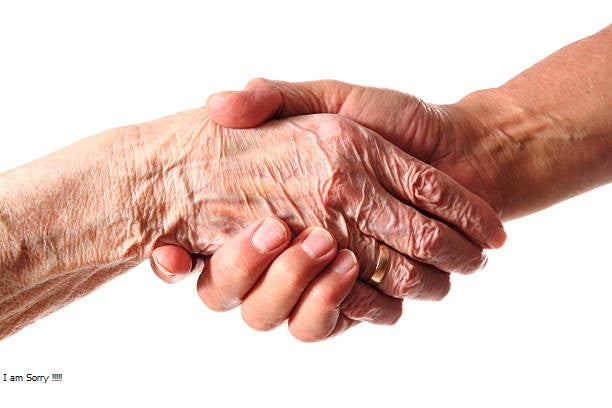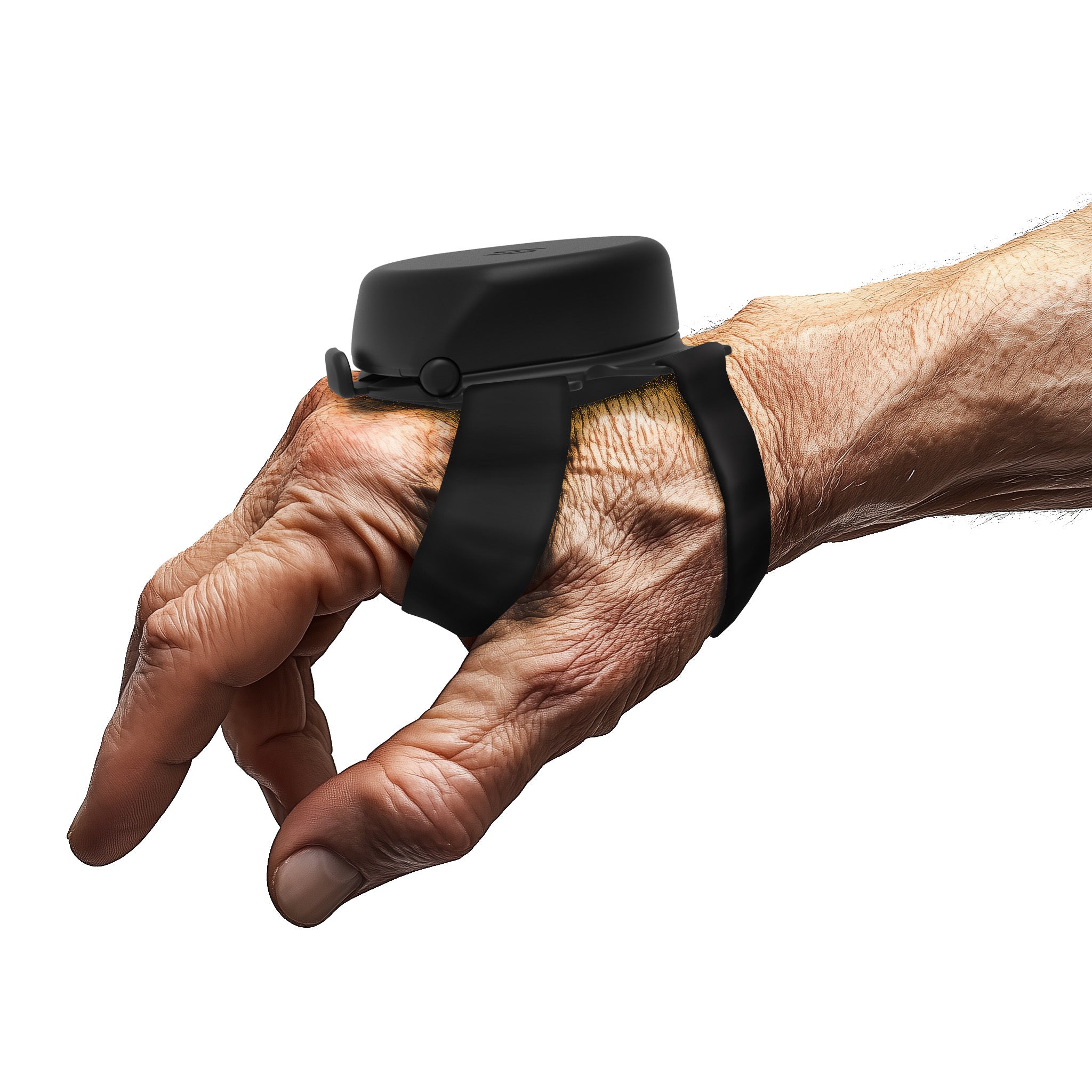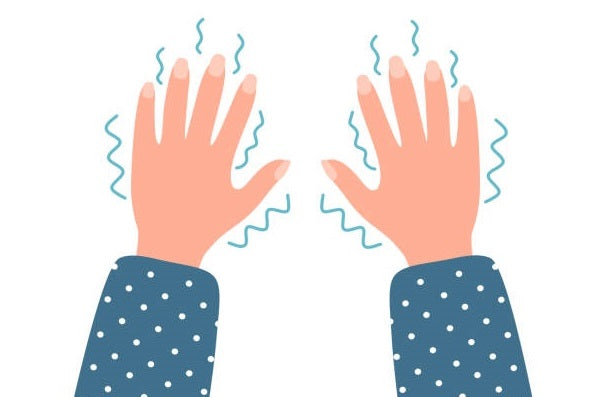As we’ve already covered, uncontrollable shivering and body shaking is a condition that could occur to any of us at any age. But when it happens to the elderly, what could that be a sign of? And what could be the cause? Join us as we discover more about why old people shake, what treatment options they have, and how they can cope.
What Causes Body Shaking?
If you were wondering "Why am I shaking?" The answer is most probably because of your genes. The probability of all types of body tremors is highly linked to genetic factors, meaning that if any of your parents have an altered gene for tremors, there’s a good chance that you’re going to develop it as well. Unfortunately, we have no clear answer of what are the exact causes of body tremors. What we do know is that these tremors could be a side effect that associates multiple neurological disorders and diseases, some medications, and more. Let’s name a few good examples.
Essential Tremor:
Affecting almost 5% above the age of 65, essential tremor is a neurological disorder, known for causing sudden uncontrollable shaking in the elderly, mostly for people above the age of 65. It could affect multiple parts of the body at once, like the limbs, the torso, the voice, and the head. The specific etiology of this disorder is unknown, however it appears to run in families and may be linked to irregularities in some brain areas that control movement. Moreover, essential tremor isn't usually linked with any other neurological symptoms.
Parkinson’s Disease:
This degenerative neurological disease has become the most common cause of uncontrollable shivering in the elderly population, especially those over the age of 60. It causes the body to lose a huge amount of dopamine-producing neurons, which slowly impairs a patient's mobility. Aside from tremors, Parkinson's disease can cause stiffness, delayed movement, and problems with balance and coordination. Many Parkinson's patients report non-motor symptoms such as depression, anxiety, and cognitive difficulties as well.
Medication Side Effects:
Tremors are a common side effect of many drugs, especially those used to treat neurological diseases and mental illnesses. Other medications, including certain asthma treatments, and decongestants, might cause old people to experience such symptoms. Although the exact nature of these tremors tends to vary from one person to another, they often appear similar to ET or PD tremors, and they can range in severity depending on the individual's condition.
Hyperthyroidism:
Hyperthyroidism in the elderly is not rare, and it frequently unusually manifests itself. This disorder develops when the thyroid gland releases too much thyroid hormone, resulting in a hyperactive metabolism. Symptoms include tremors, accelerated heart rate, weight loss, and heat sensitivity. However, indications and symptoms are frequently non-specific and might be attributed to aging or disorders in other organ systems, resulting in delayed diagnosis and repercussions.
Age-related Muscle Weakness:
The type of muscle weakness that comes with aging often forces individuals to be feeling shaky and weak most of the time, especially during tasks that demand strength or tolerance. Individuals with this medical condition might struggle to walk and maintain their balance, as well as experience tremors or shaking while moving.
Low Blood Sugar:
People with diabetes also tend to experience tremors due to their low blood sugar levels. Tremors related to low blood sugar levels could occasionally happen to non-diabetics as well when they, for example, spend extended periods without eating.
Stress and Anxiety:
Increased stress and anxiety can lead people of all ages, including the elderly, to experience brief periods of tremors or shaking. This is frequently related to the body's physiological response to stress, which may include increased heart rate, muscle tightness, and of course, tremors. Stress-induced body shaking can vary in nature and severity, and they may be accompanied by other anxiety symptoms.
What are The Common Types of Tremor?
Tremors that the elderly experience can be classified into various categories, each with its own set of characteristics and causes. Here are the most common types of tremors:
Essential Tremor:
As we’ve mentioned earlier, essential tremor is a neurological disorder, known for causing sudden uncontrollable shaking in elderly, mostly for people above the age of 65. It can affect multiple parts of the body, and it tends to be rhythmic. Although we haven’t quite figured out the exact causes of ET, it’s mainly believed to be familial.
Parkinsonian Tremor:
Parkinsonian tremor is linked to Parkinson's disease, and its tremors usually start in one hand and then slowly progress to both sides of the body. This type of tremor is considered a resting tremor, which means it becomes very noticeable when the affected body part is not moving, and gradually decreases with intentional movement.
Dystonic Tremor:
Dystonic tremors usually appear in twisting, repetitive movements, or unusual postures. Dystonic tremor can develop in the same body part as dystonia or occur on its own, either way, the tremor will be irregular and might be aggravated by voluntary actions and movements.
Physiologic Tremor:
This is a very normal type of low-amplitude body shaking that affects all healthy people and is usually invisible to the naked eye. It is frequently aggravated by stress, exhaustion, caffeine, and some drugs.
Enhanced Physiologic Tremor:
This type of tremor is very similar to essential tremor but it's more intense and is usually caused by stress, exhaustion, caffeine, or specific medications. It may be more noticeable when you're under an immense amount of stress and anxiety.
Orthostatic Tremor:
This is a high-frequency and intense type of tremor that becomes very noticeable while standing still, making it a resting tremor. It is commonly described as feeling shaky and weak when standing still.
Can You Treat Sudden Uncontrollable Shaking in Elderly?
While it’s not impossible, it’s definitely not an easy task. The treatment process is long, and it all depends on accurately identifying all the underlying causes of these tremors. For a better understanding, let’s go through the general approach:
Identify the Underlying Cause:
To properly begin the therapy journey, you must first identify the specific underlying issues in order to develop an effective treatment strategy. The doctor typically conducts a physical examination, neurological evaluation, blood testing for thyroid function and other abnormalities, and imaging procedures like MRI or CT scans to rule out structural or neurological issues, which eventually gets them one step closer to figuring out why you’re experiencing such uncontrollable shivering.
Medication Adjustment:
Sometimes, the cause of the tremors could be linked to a certain medication. Various types of medications often cause tremors as a side effect, therefore, your doctor might alter your dosage or make you switch to an alternative medicine.
Treat Underlying Medical Conditions:
Targeting the root cause of the tremors is the main objective of any treatment plan. As we've previously discussed, tremors could be a symptom of many neurological disorders, diseases, and conditions. Managing the root cause means managing the tremors themselves. This should be done with care under the supervision of a healthcare professional to avoid any deadly mistakes.
Lifestyle Modifications:
Adjusting your lifestyle can help alleviate your tremors and enhance your overall health. Many things that we tend to do normally in our daily lives could be the very cause of worsening our problem, we just don't know. This could involve consuming caffeine, enduring high temperatures, and undergoing stressful situations. All of these things are considered triggering factors for tremors that you should avoid.
Physical and Occupational Therapy:
Things like physical and occupational therapy are considered very important for patients to keep their body shaking symptoms under control. At a certain level, the root cause of the tremors could have gotten to a point where it’s making the tremors so intense that they’re obstructing your daily life activities. Occupational and physical therapy allows you to reverse that negative effect and stay in control of your motor functions through a series of techniques, methods, exercises, and assistive tools and gadgets that make it easier for you to go about your day.
Why do Old People Experience Uncontrollable Shivering?
Sudden uncontrollable shaking in elderly individuals can be alarming and often misunderstood. While aging itself doesn’t directly cause tremors, it does increase the likelihood of developing neurological conditions, hormonal imbalances, or medication side effects — all of which can result in uncontrollable shivering. In many cases, the question of why old people shake can be answered by looking at the changes that naturally occur in the brain and nervous system with age. Other times, it might be a sign of more serious medical conditions that require immediate attention. Regardless of the cause, understanding the root of uncontrollable shivering is the first step in managing or treating the sudden shaking in elderly individuals.
Explore Our Solutions at Steadiwear:
Steadiwear's team of professionals is passionate about providing assistance to those who need it, wherever they may be. Our Steadi-Two glove is the perfect solution for helping patients manage their symptoms and take control of their motor functions.
Our Essential Tremor Glove is designed to provide comfort and support to those experiencing any sort of tremors or shakiness that's keeping them from performing their daily activities.
In Conclusion:
Finally, uncontrollable shivering is not uncommon for people, especially for the elderly. The best way to deal with it is to figure out why it’s happening in the first place and work your treatment plan up from there. It’s always best to work closely with a healthcare professional to ensure proper treatment.




